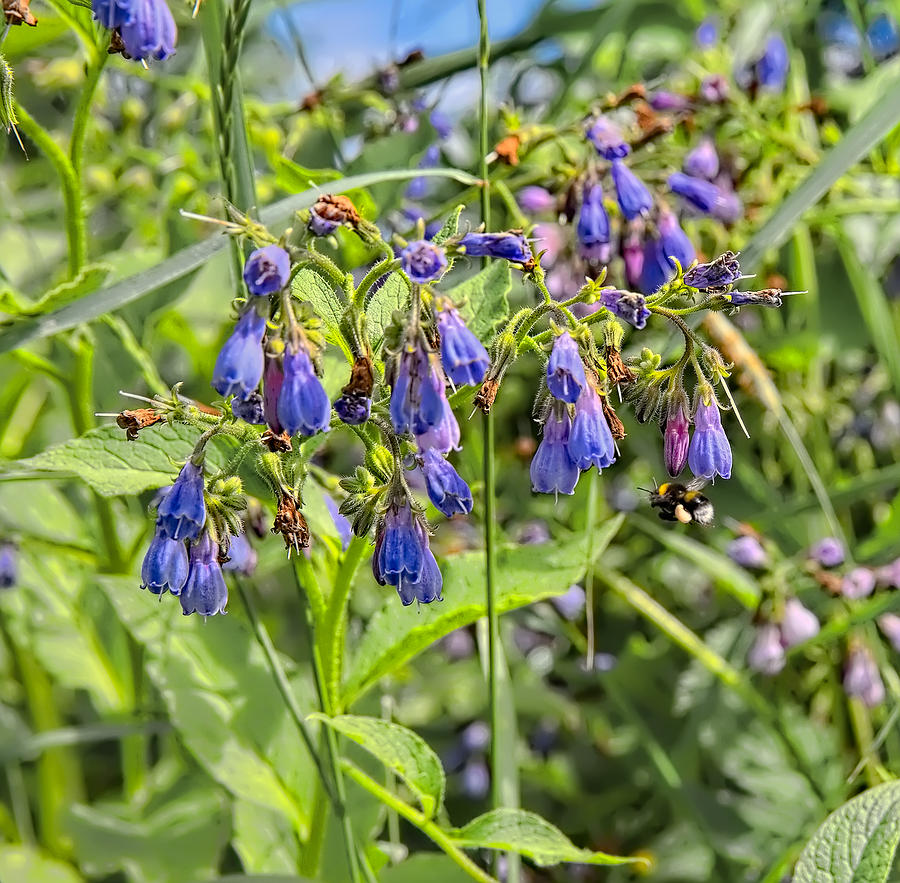
officinale root extract preparations affect E-selectin expression in a dose- and time-dependent manner. NF-κB Symphytum officinale comfrey endothelial cells inflammation transactivation transcription. These results provide a first mechanistic insight into the mode of action of a century-old popular herbal medicine. Furthermore, our biochemical studies provide evidence that comfrey inhibits NF-κB signaling at two stages: it dampens not only the activation of IKK1/2 and the subsequent IκBα degradation, but also interferes with NF-κB p65 nucleo-cytoplasmatic shuttling and transactivation. Both preparations inhibit the activation of NF-κB, a transcription factor of central importance for the expression of these and other pro-inflammatory genes. The extract, and especially its mucilage-depleted fraction, impair the interleukin-1 (IL-1) induced expression of pro-inflammatory markers including E-selectin, VCAM1, ICAM1, and COX-2. Here, we show that a hydroalcoholic extract of comfrey root impairs the development of a pro-inflammatory scenario in primary human endothelial cells in a dose-dependent manner. However, the molecular basis of its action remained elusive. Today, its topical use is based on its analgesic and anti-inflammatory effects, which have been substantiated by modern clinical trials. Typical potencies: Symphytum is mainly used in the potencies 6X, 12X, 30X and 200X.Symphytum officinale, commonly known as comfrey, constitutes a traditional medicinal plant with a long-standing therapeutic history, and preparations thereof have been widely used for the treatment of painful muscle and joint complaints, wound and bone healing, and inflammation.
SYMPHYTUM OFFICINALE FULL
Symphytum does not interfere with the effects of other drugs. However, if possible, one should avoid using other analgesics during use in order to experience the full effect of the homeopathic remedy. In horses, the homeopathic Symphytum is used to treat the peel. In this disease, the toe joints in horses in particular, but also in other hoofed animals, are affected by joint wear (arthrosis). Signs of the shell is lameness of horses. In dogs, it is given to treat panostitis. This is an inflammation of the long tubular bones during the growth phase. Symphytum is given to animals for bone growths that have developed after a bone fracture or injury. Symphytum for the babyīabies are treated with Symphytum in case of injuries, broken bones and slow healing of broken bones. If necessary, the drug can also be taken over a longer period of time and at any time during pregnancy. In addition to the discomfort caused by hormonal changes, one of the typical discomforts during pregnancy is the anatomical change in the pelvic girdle. In particular, pain in the pubic bone and coccyx causes unpleasant discomfort for most pregnant women. Symphytum can be given in all phases of pregnancy without any problems and can help to alleviate the symptoms. Symphytum acts on the bones, tendons, ligaments, joints, the eyeballs and the stomach. It is best to treat with a D30 potency, which is administered once a day. If the symptoms are acute, especially in the case of general rheumatic symptoms, one uses D12 and gives it three times a day. If necessary, this can be increased to five doses. We also recommend a Symphytum ointment (also in combination with Arnica) for external use, which is applied every four hours and gently massaged in.Īnyone who has not yet had any experience with homeopathic remedies should start with the D6 potency and take it three to five times a day in the form of 5 globules or 1 tablet. Symphytum is mostly used in potencies 6X, 12X, 30X and 200X.

Symphytum supports the rapid healing of all types of broken bones and damaged periosteum.ĭosage: 3 times a day 3 globules in the potency D6 Injuriesįor painful tendons and ligaments also in connection with broken bones to support callus formation and the periosteum. For blunt injuries of the eye, facial injuries and phantom pain.ĭosage: 3 times a day 3 globules in the potency D6

What are typical areas of application for Symphytum? Symphytum is indicated for all typical symptoms that improve or worsen by the following modalities: The patient’s appearance or discomfort is consistent with his injuries. Information about the agent Appearance of Symphytum Blunt injuries to the eyes, the periosteum, the bones.Other uses include foreign objects in the eye or blows to the eye, after which the patient feels the eyeball bulging or has the desire to rub the eyes. Touching or pressure on the affected area aggravates the condition, while heat improves it. The homeopathic use of Symphytum corresponds to its original use as a remedy: it is used for sprains, fractures and poorly healing bones as well as for injuries to cartilage and periosteum tissue or amputations and bone tumors.


 0 kommentar(er)
0 kommentar(er)
